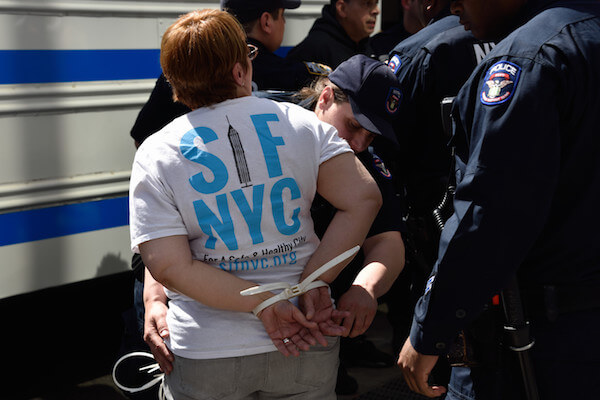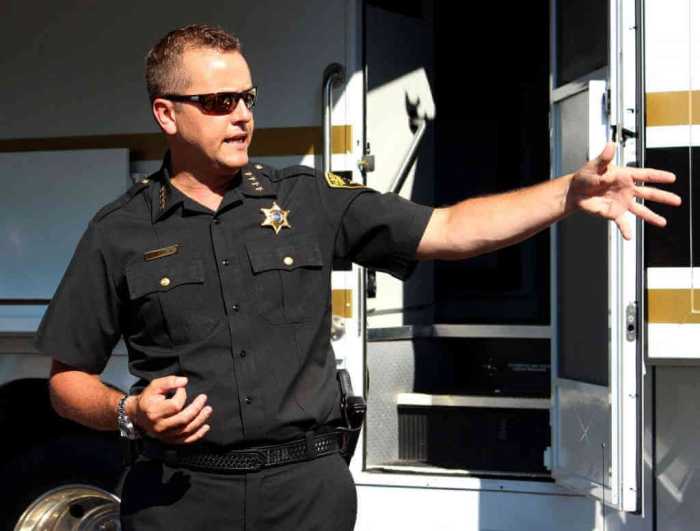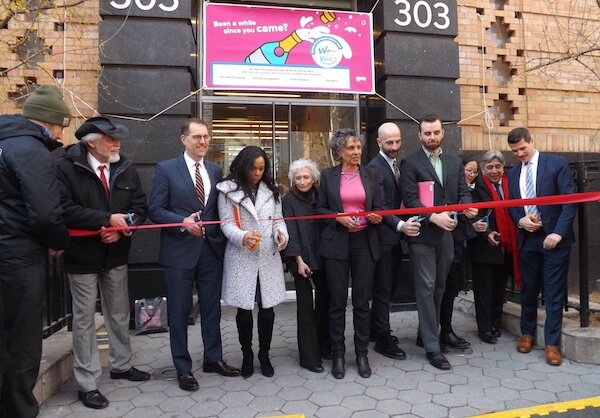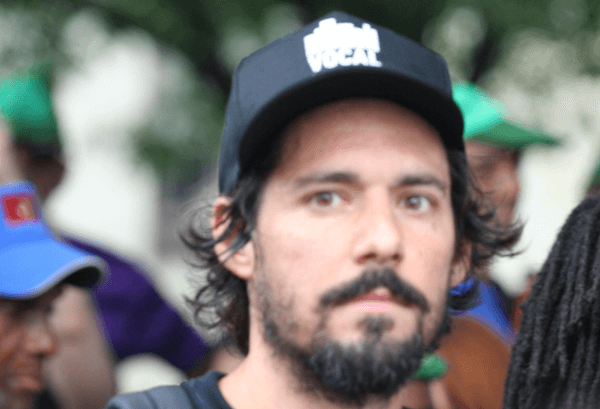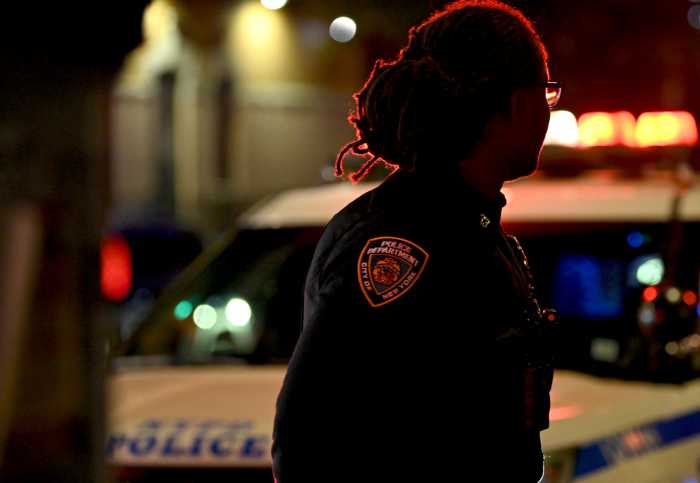Demonstrators sit in on Lower Broadway near City Hall following a May 2 speakout on Safer Consumption Spaces called by VOCAL-NY, Housing Works, and the Drug Policy Alliance demanding that Mayor Bill de Blasio release the city's study on this approach to curbing overdose deaths. | DONNA ACETO
BY NATHAN RILEY | Outraged that Mayor Bill de Blasio continues to sit on a city health department study into the efficacy of establishing safe places for drug users to pursue their high — facilities that are in place all over Europe with proven track records of reducing fatal overdoses — protestors sat down in the middle of Broadway across from City Hall bringing downtown traffic to a halt.
Brooklyn Councilmember Stephen Levin, chair of the General Welfare Committee, speaks to the press prior to his arrest in the sit-in. | DONNA ACETO
Ten activists and City Councilmember Stephen Levin were arrested in the May 2 morning sit-in, as allies chanted slogans directed at the mayor, including “While you wait, we die” and “End overdoses now.”
The city study was finished in December and the mayor promised to release it in April, but then didn’t do so.
“I’m pissed off,” Asia Betancourt of VOCAL-NY said in an interview before joining a speakout that preceded the Broadway civil disobedience. “There’s absolutely no excuse. People are dying left and right.”
[Editor’s update: The day following this protest, de Blasio announced that four such facilities will be opened.]
An average of three to four people die of overdoses every day in New York City, and those numbers would tumble if users could inject in supervised facilities where medication that interrupts overdoses, professionally delivered, is just steps away.
Called Safer Consumption Spaces among those pushing the issue here in New York, the facilities also provide sterile equipment that reduces the risk of hepatitis C, abscesses, and other ailments that come from using in public bathrooms, city parks, and parking lots. Overdose prevention workers are on hand to explain proper procedures for avoiding contamination and, should a user request it, provide information on sites offering drug treatment. They can also offer assistance on problems like evictions or arrests that often pose more pressing challenges to users than their drub habit.
Levin taken into custody. | DONNA ACETO
Most importantly, should a user overdose, the health workers have naloxone at the ready. It’s a public health wonder drug, a nasal spray that is squirted into a person’s nostril to inhibit the effects of opioids and quickly restores normal breathing.
A Google search for Safer Injection Facilities — the phrase most often used when the concept first emerged — shows how far behind New York City is from the services offered in Europe and Canada. The very first article that appeared in the search was written in 2002, reporting that Germany had 13 SIFs operating in four cities; the Netherlands, 16 SIFs operating in nine cities; and Switzerland, 17 SIFs operating in 12 cities. Sixteen years ago, such facilities were regarded as an essential component in AIDS prevention.
Demonstrators massed outside the gates of City Hall. | DONNA ACETO
Since then, these programs have expanded to 100 cities worldwide. Safer Consumption Spaces differ from needle exchanges “where clients generally visit briefly,” according to the article in the Journal of Drug Issues, and “allow for a more prolonged interaction” with health care staff. The facilities “place trained staff in direct proximity with injectors while they are waiting to consume their drugs, as well as after they have done so and returned to the waiting room to relax. SIFs that offer a café and other services give clients even more reason to remain on-site and interact with staff, during which time the clients become further stabilized.”
Levin, who chairs the Council’s General Welfare Committee, explained he was willing to be arrested to “make sure the mayor does the right thing. The science is clear.”
Protesters marching on Lower Broadway. | DONNA ACETO
In a written statement, the Brooklyn councilmember elaborated, “There is a path we can take where fewer of our neighbors, our friends, and our family members lose their lives. That path is through a serious commitment to harm reduction and Safer Consumption Spaces in particular. The drug war has failed… Nearly two years ago, the Council commissioned a study on Safer Consumption Spaces. Today, our message to the administration is simple — release the study.
Council Speaker Corey Johnson, who as the Health Committee chair in 2016 initiated the study, released a statement saying, “I don’t know what the holdup is. Other cities are moving forward and we’re stuck in limbo. Meanwhile, the number of people overdosing continues to skyrocket. This is not a time for inaction. The mayor knows how strongly I feel about this, and we will continue to push for the study’s release.”
Another protester being taken into police custody. | DONNA ACETO
Support for Safer Consumption Spaces has widespread support in the medical and political communities. In February, Dr. Mary Bassett, de Blasio’s health commissioner, told a Council budget hearing that “the public health literature is clear” on the benefits of the approach, which has also been endorsed by the American Medical Association.
Former Mayor David Dinkins, a mentor to de Blasio, announced his support last week, as did former Manhattan Borough President C. Virginia Fields, now CEO of the National Black Leadership Commission on AIDS. More than 100 public health workers signed a letter of support for the program, and The New York Times gave the idea its strong endorsement.
But nothing seems to move the mayor.
Advocates at the speakout said that since the Council first authorized the study, 1,500 people have died in New York City from fatal overdoses. Any one of them who had been injecting in a Safer Consumption Space would still be alive. Nobody — as in zero —has ever died from an overdose in such a facility, a fact made even more profound when consideration is given to the millions of injections that have taken place in them all over the world.

